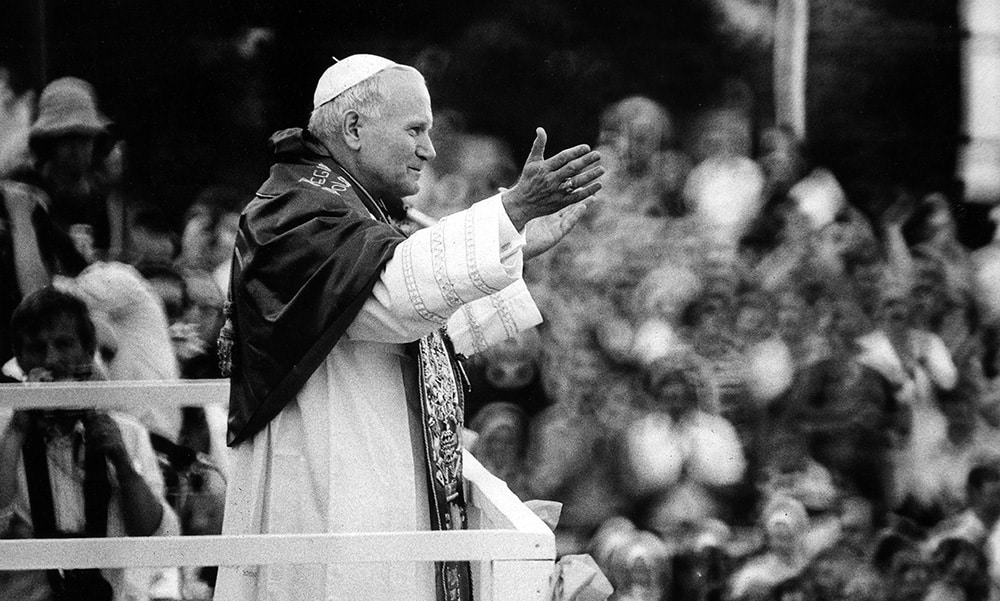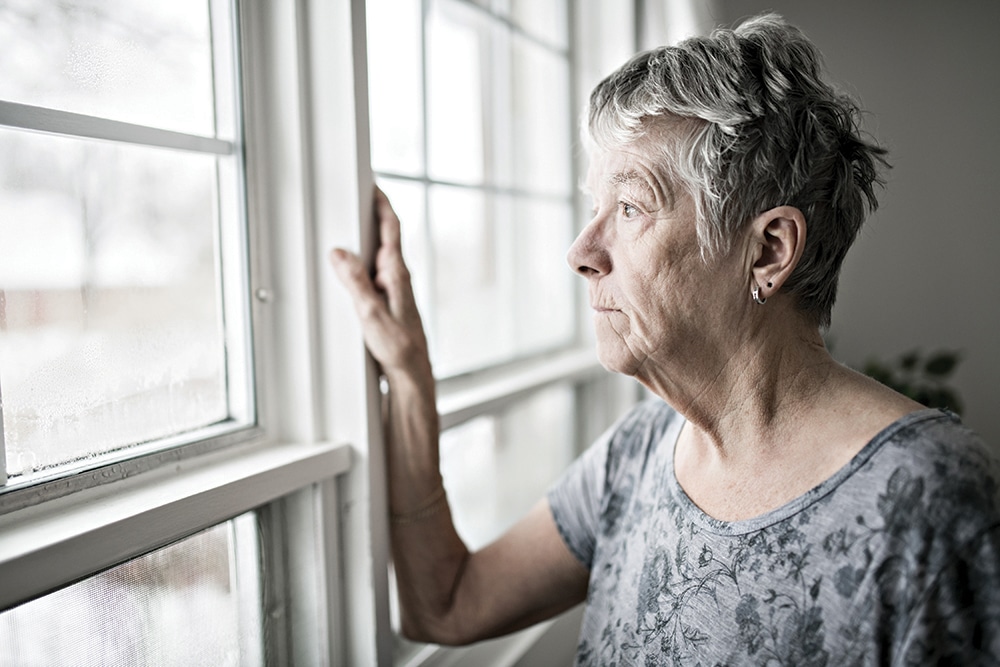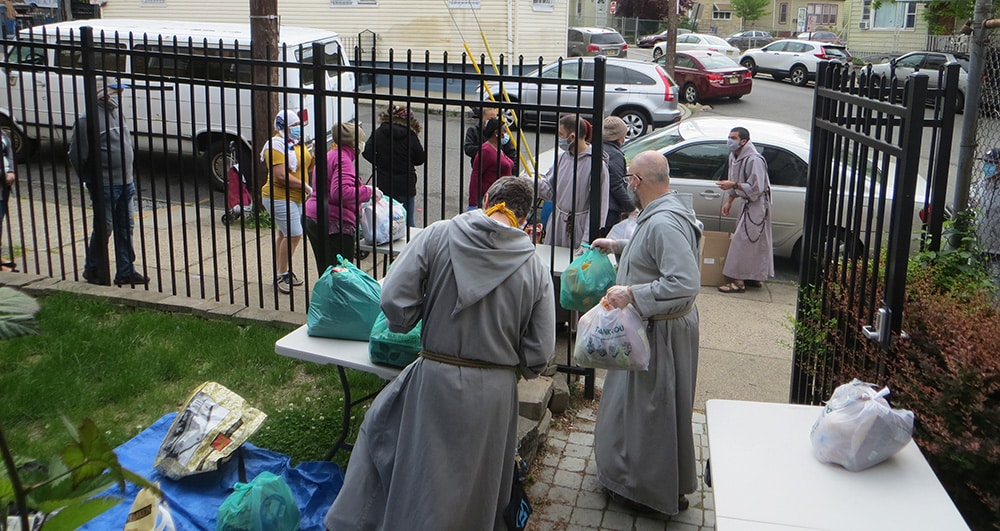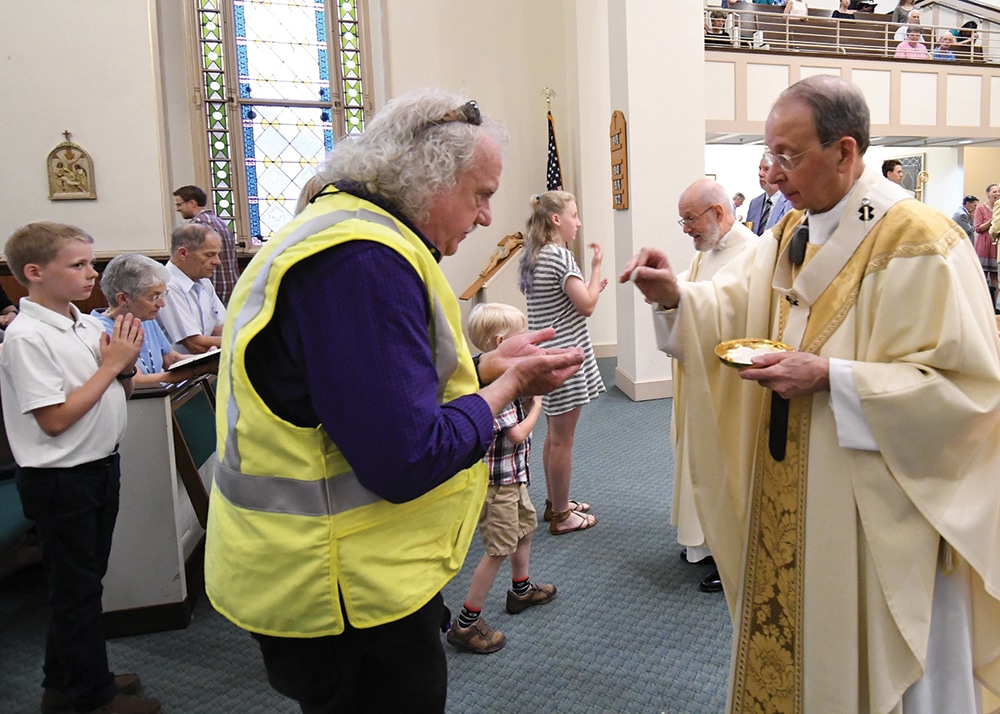Whenever he spoke, whenever he traveled, whenever he wrote, Pope St. John Paul II made history. Long before he stepped out onto the loggia of St. Peter’s Basilica in the fall of 1978 as Supreme Pontiff, Karol Wojtyła had already made a substantial mark on the Catholic Church — and the world — but the best was yet to come.
Whether as a priest, bishop or pope, Pope St. John Paul II left his mark in large and small ways. As the world remembers him this month on the centenary of his birth (he was born on May 18, 1920, in Wadowice, Poland), we take a look at the impact he left on the 20th century and beyond.

A heart for young people
As a young man, Wojtyła had been known as a gifted actor who took to the stage with a clandestine theater troupe during the Nazi and communist occupation of his native Poland. But when his father died a few months before he turned 21, the future pope stunned his friends by announcing that he was going to be a priest. His mother had passed away when he was 9, and his older brother, a doctor, had died during a scarlet fever outbreak.

During his seminary studies and his priestly ministry, Wojtyła engaged young people. In 1946, he left Poland to further his studies in Rome. Throughout this time, he spent his vacations ministering to young Polish emigrants in France, Belgium and Holland. A naturally gifted linguist, he made efforts to learn French and Italian during these months abroad. He would become fluent in 11 languages.
He then returned to Poland and taught at two prominent universities. As a professor, he formed a small group of young people who began to call themselves Rodzinka, or “Little Family.” They met for philosophical discussion, for prayer and to help the sick. The group grew to nearly 200, and their activities expanded to include skiing and kayaking trips.
The experience of forming community and ministering to young adults stayed with the young priest. He stayed in touch with this group throughout his life, watching its members fall in love, have children and grow old. Father Wojtyła’s experiences formed the basis of his first book, “Love and Responsibility,” published in 1960. The book delves into Catholic teaching on sexual ethics and morality, and it formed the basis of the first major teaching of his pontificate nearly 20 years later — theology of the body.
As pope, he met with young people in Paris in 1980, and he marked the 1984 Holy Year by meeting with youth in Rome. From there, the idea of a larger, international gathering began to percolate. He invited youth back to Rome in 1985 — and a quarter of a million took him up on it. World Youth Day was born. John Paul used the gatherings to challenge young people to know Jesus in a deep and personal way.
During his final visit to the United States in 1999, he preached to youth about prayer. “You belong to Christ,” he said in St. Louis. “But you will get to know him truly and personally only through prayer. What is needed is that you talk to him and listen to him. Today we are living in an age of instant communications. But do you realize what a unique form of communication prayer is? Prayer enables us to meet God at the most profound level of our being. It connects us directly to God: Father, Son and Holy Spirit, in a constant exchange of love.”
Similarly, in 1993, at World Youth Day in Denver, John Paul challenged young people to be bold and evangelical in telling the world about their faith in Jesus Christ.
“Do not be afraid to go out on the streets and into public places, like the first apostles who preached Christ and the Good News of salvation in the squares of cities, towns and villages. This is no time to be ashamed of the Gospel. It is the time to preach it from the rooftops!”
Unpacking Vatican II
John Paul’s passion for Jesus’ Great Commission was core to his priesthood and his pontificate. Pope St. John XXIII made him an auxiliary bishop of Kraków in 1958. Four years later, he journeyed to Rome for the first session of the Second Vatican Council. Over the course of its four sessions, the Polish cardinal left an indelible mark on the council’s reform of the Church — and he spent the rest of his life implementing those reforms, first in Kraków and then, as pope, around the world.
Cardinal Wojtyła was instrumental in developing the council’s text on religious freedom and the vocation of the laity — as well as the Pastoral Constitution on the Church in the Modern World, Gaudium et Spes.

When he was elected pope, only 13 years after the council’s closing, John Paul II inherited a deeply divided Church. One faction proclaimed the “Spirit of Vatican II,” while another thought the council was a terrible mistake. The pope understood immediately that his task would be to interpret and unpack the council. In virtually every document he wrote — and in many of his speeches and homilies — he referenced Vatican II.
In 2001, he wrote: “From the beginning of my pontificate, my thoughts had been on this Holy Year 2000 as an important appointment. I thought of its celebration as a providential opportunity during which the Church, 35 years after the Second Vatican Ecumenical Council, would examine how far she had renewed herself, in order to be able to take up her evangelizing mission with fresh enthusiasm” (Novo Millennio Ineunte, No. 2).
John Paul insisted that Vatican II was “truly a prophetic message for the Church’s life; it will continue to be so for many years in the third millennium.”
One of the fruits of the council was a new Code of Canon Law. Pope John XXIII had aspired to revise the Church’s complex legal system, but his efforts took a backseat to Vatican II. Revisions to the Code of Canon Law moved slowly until John Paul II kickstarted the process in 1982. That year, he met with seven canonical experts from different countries. Things moved quickly, and the revised code was promulgated 11 months later. The pope called the 1983 revised code “Vatican II’s final document.”
With the tumult that followed Vatican II, both Pope St. Paul VI and John Paul II fixed their attention on the necessity of unpacking the council and dealing with the dissent and rampant confusion left in its wake. To this end, John Paul convened an extraordinary Synod of Bishops in 1985 to mark the 20th anniversary of Vatican II’s conclusion.
The synod’s final report recommended a universal catechism of Catholic faith and morals. The previous universal catechism, the Roman Catechism, written in the wake of the Council of Trent (1545-63), had held sway for 400 years.
John Paul tasked a group of 12 bishops with creating the new catechism. The group was led primarily by Cardinal Joseph Ratzinger, then prefect of the Congregation for the Doctrine of the Faith, and Father Christoph Schönborn, who later became archbishop of Vienna.
John Paul approved and promulgated the text in 1992. It was first published in French (1992), then in English (1994) and Latin (1997). Unlike previous iterations, this catechism was not in question-and-answer format. The 2,865 paragraphs are a veritable treasure trove of quotations from the Fathers, Doctors and saints of the Church.
Critics inside the Church said that a universal catechism was an outdated idea, that there was no need for such a resource. But John Paul shot back that the Catechism was “indispensable, in order that the richness of the teaching of the Church following the Second Vatican Council could be preserved in a new synthesis and be given a new direction. Without the Catechism of the universal Church, this would not have been accomplished.”
The faithful responded to the critics by making the Catechism an international bestseller, with well over 8 million copies in print in 20 languages worldwide.
The mercy pope
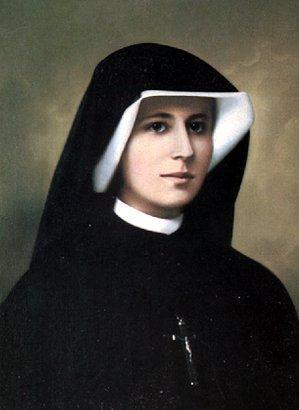
Pope John Paul II’s promotion of the Divine Mercy message is one of the most important ways in which he changed the world for one simple reason: He and St. Faustina Kowalska were pivotal players in God’s plan to set the stage for Jesus’ second coming.
Many believe that Divine Mercy is simply a pious, Polish devotion. It is that, but it’s much more. Divine Mercy is God’s love poured out for mankind during the time before Jesus’ return — or before our particular judgment at the foot of his throne immediately after our death, whichever comes first. It’s Jesus reaching out to each of us personally, calling us to repent now because he wants us to spend eternity with him.
After young Karol Wojtyła finished high school in his hometown of Wadowice, he and his father moved to Kraków in August 1938 so the teenager could start his university studies. A few months later, 33-year-old Sister Faustina Kowalska died in Kraków. The young nun and the future pope never met, but their paths certainly crossed in mystical ways.
As the archbishop of Kraków, Wojtyła played a key role in authenticating the Divine Mercy message Jesus had given to Sister Faustina during the 1930s. The young nun had only three years’ schooling, so her diary detailing the mystical experiences was written like that of a child. Bad translations were leaked out of communist Poland after her death, so the Vatican put a prohibition on spreading her writings.
Cardinal Wojtyła subjected Faustina’s diary to its first scholarly analysis, and he opened her cause for canonization in 1965. He tasked one of his top theologians with authenticating her diary. Exactly six months after the Holy See lifted the prohibition of her Divine Mercy message, Wojtyła was elected bishop of Rome.
In his 1980 papal encyclical, Dives in Misericordia (“Rich in Mercy”), John Paul II asked the faithful to plead for God’s mercy as the only answer to humanity’s tribulations. In 1982, he said that God had called him to help spread the message of mercy: “Right from the beginning of my ministry in St. Peter’s See in Rome, I considered [spreading the Divine Mercy] message my special task. Providence has assigned it to me in the present situation of man, the Church and the world. It could be said that precisely this situation assigned that message to me as my task before God.”
Divine Mercy is woven through the entirety of John Paul’s work as pope. “It is truly marvelous how [Faustina’s] devotion to the merciful Jesus is spreading in our contemporary world and gaining so many human hearts!” he said at her 1993 beatification. “Where, if not in the Divine Mercy, can the world find refuge and the light of hope?” A year later he said, “As people of this restless time of ours, wavering between the emptiness of self-exaltation and the humiliation of despair, we have a greater need than ever for a regenerating experience of mercy.”
Jesus made two demands of Faustina: to have an image of him painted as she saw him in her visions and to have the Sunday after Easter dedicated to his mercy. When John Paul canonized her in 2000 — the first saint of the Jubilee Year — he fulfilled the latter demand, declaring that “it is important then that we accept the whole message that comes to us from the word of God on this Second Sunday of Easter, which from now on throughout the Church will be called ‘Divine Mercy Sunday.'”
| ‘100 Ways John Paul II Changed the World’ |
|---|
|
In his new book, “100 Ways John Paul II Changed the World” (OSV, $16.95), author Patrick Novecosky, writer of this In Focus, walks readers through the myriad ways in which the saint left his mark on the world. Each of the 100 accomplishments, teachings or stories about John Paul II is fascinating, providing a glimpse into the astounding life and impact of this great and beloved saint. For more information, visit osvcatholicbookstore.com.
|
He noted that by canonizing Faustina he intended “to pass this message on to the new millennium. I pass it on to all people, so that they will learn to know ever better the true face of God.”
He also lauded the new saint for her faith in Jesus. “And you, Faustina, a gift of God to our time, a gift from the land of Poland to the whole Church, obtain for us an awareness of the depth of Divine Mercy; help us to have a living experience of it and to bear witness to it among our brothers and sisters.”
After the canonization Mass, the Holy Father reportedly told his guests that this was the happiest day of his life. It certainly was the icing on the cake of John Paul’s efforts to fulfill Jesus’ demand to make his mercy known to the whole world.
The New Evangelization
While teaching and catechesis were John Paul II’s passion, the Polish philosopher pope knew that helping to bring Catholics into right relationship with Jesus Christ was truly his principal task. Paul VI taught that the Church exists to evangelize, but John Paul II recognized that the Church had not always been focused on evangelization, so he set out to bring Jesus to the world in new ways.
He formally called for a “new evangelization” in his 1990 encyclical Redemptoris Missio. However, he had been preaching about it for years. In 1988, he said that “the present-day phenomenon of secularism is truly serious, not simply as regards the individual, but in some ways, as regards whole communities, as the council has already indicated: ‘Growing numbers of people are abandoning religion in practice.’ At other times I myself have recalled the phenomenon of de-Christianization that strikes longstanding Christian people, and which continually calls for a re-evangelization.”
Pope John Paul II pulled no punches, saying that it is a requirement for every follower of Jesus to evangelize: “God is opening before the Church the horizons of a humanity more fully prepared for the sowing of the Gospel. I sense that the moment has come to commit all of the Church’s energies to a new evangelization and to the mission ad gentes [to the nations]. No believer in Christ, no institution of the Church can avoid this supreme duty: to proclaim Christ to all peoples” (Redemptoris Missio, No. 3).

When a pope says with unwavering conviction that the Church must commit all of her energies to an initiative, the faithful must sit up and take note. Those of us who lived during his 26-year pontificate, watching him circling the globe, calling the faithful to conversion and a deeper relationship with Jesus Christ, should count ourselves blessed to have experienced what few have witnessed over the course of the Church’s two millennia — a great saint standing on the world stage, pointing to heaven and to the Creator of the universe.
Patrick Novecosky is a Catholic journalist, the managing partner of NovaMedia and the author of “100 Ways John Paul II Changed the World” (OSV, $16.95).

| The saint with a passion for America |
|---|
|
Pope John Paul II had a special affinity for the United States. His passion for the U.S. is evident not only in his speeches and writings on the national values of freedom and justice contained in our founding documents but in his love for Americans themselves.
 Prior to his 1978 election as pope, he had visited the U.S. twice — in 1969 and again in 1976 — as archbishop of Kraków. As pope, he visited the U.S. seven times, including two brief stopovers in Alaska. His five significant visits were packed with joy, drama and record-setting crowds. In his addresses, John Paul extolled the founders’ vision of freedom and self-rule, but he also reminded Americans of the responsibility that comes with liberty. “Every generation of Americans needs to know that freedom consists not in doing what we like, but in having the right to do what we ought,” he said on a 1995 visit to Baltimore. “Catholics of America! Always be guided by the truth — by the truth about God who created and redeemed us, and by the truth about the human person, made in the image and likeness of God and destined for a glorious fulfillment in the Kingdom to come. Always be convincing witnesses to the truth.”  All told, the globe-trotting Polish pontiff made 104 foreign trips, touching down in 129 countries (two-thirds of all nations on the planet). He logged more than 775,000 miles — the equivalent of circling the globe more than 30 times. America and her people were always close to his heart. In fact, of his travels outside of Italy, he only visited France and Poland more times than the U.S. Poignantly, it was during his six-city 1979 visit that he best expressed his love and challenge for the United States. During that trip, he made the unusual choice of visiting Living History Farms on the outskirts of Des Moines after receiving a handwritten letter from Iowa farmer Joe Hayes. The event drew the largest crowd in the state’s history — a whopping 350,000 pilgrims. “To all of you who are farmers and all who are associated with agricultural production, I want to say this: The Church highly esteems your work,” he said. “You support the lives of millions who themselves do not work on the land, but who live because of what you produce. … Farmers everywhere provide bread for all humanity, but it is Christ alone who is the bread of life.”  His 1979 visit also included a visit to the White House (a first), a Mass in front of 80,000 at Yankee Stadium, a youth rally at Madison Square Gardens in New York, a Mass on the National Mall and a ticker tape parade in Philadelphia. On his visit to the Basilica of the National Shrine of the Immaculate Conception in Washington, D.C., he commended the United States to the Mother of God with a special prayer: “Today, as I thank you, Mother, for this presence of yours in the midst of the men and women of this land — a presence which has lasted two hundred years — giving a new form to their social and civic lives in the United States, I commend them all to your Immaculate Heart.” In Boston, he lauded the country’s virtues: “America has opened her heart to me. And on my part, I come to you — America — with sentiments of friendship, reverence and esteem. I come as one who already knows you and loves you, as one who wishes you to fulfill completely your noble destiny of service to the world. Once again I can now admire firsthand the beauty of this vast land stretching between two oceans; once again I am experiencing the warm hospitality of the American people.” John Paul’s 1987 visit included stops in Miami, New Orleans, San Antonio, Phoenix, Los Angeles, Monterey, San Francisco, Detroit and Columbia, South Carolina. He returned for a rock star welcome in Denver for World Youth Day in 1993, followed by a brief stop in St. Louis in 1999 for what proved to be his final U.S. visit. His farewell addresses always contained a challenge to greater faith and responsibility. “America, your deepest identity and truest character as a nation is revealed in the position you take toward the human person,” he said in 1987. “The ultimate test of your greatness [is] in the way you treat every human being, but especially the weakest and most defenseless ones.” When he departed New York in 1979, he said, “My final prayer is this: that God will bless America so that she may increasingly become, and truly be and long remain, one nation, under God, indivisible, with liberty and justice for all.” |

